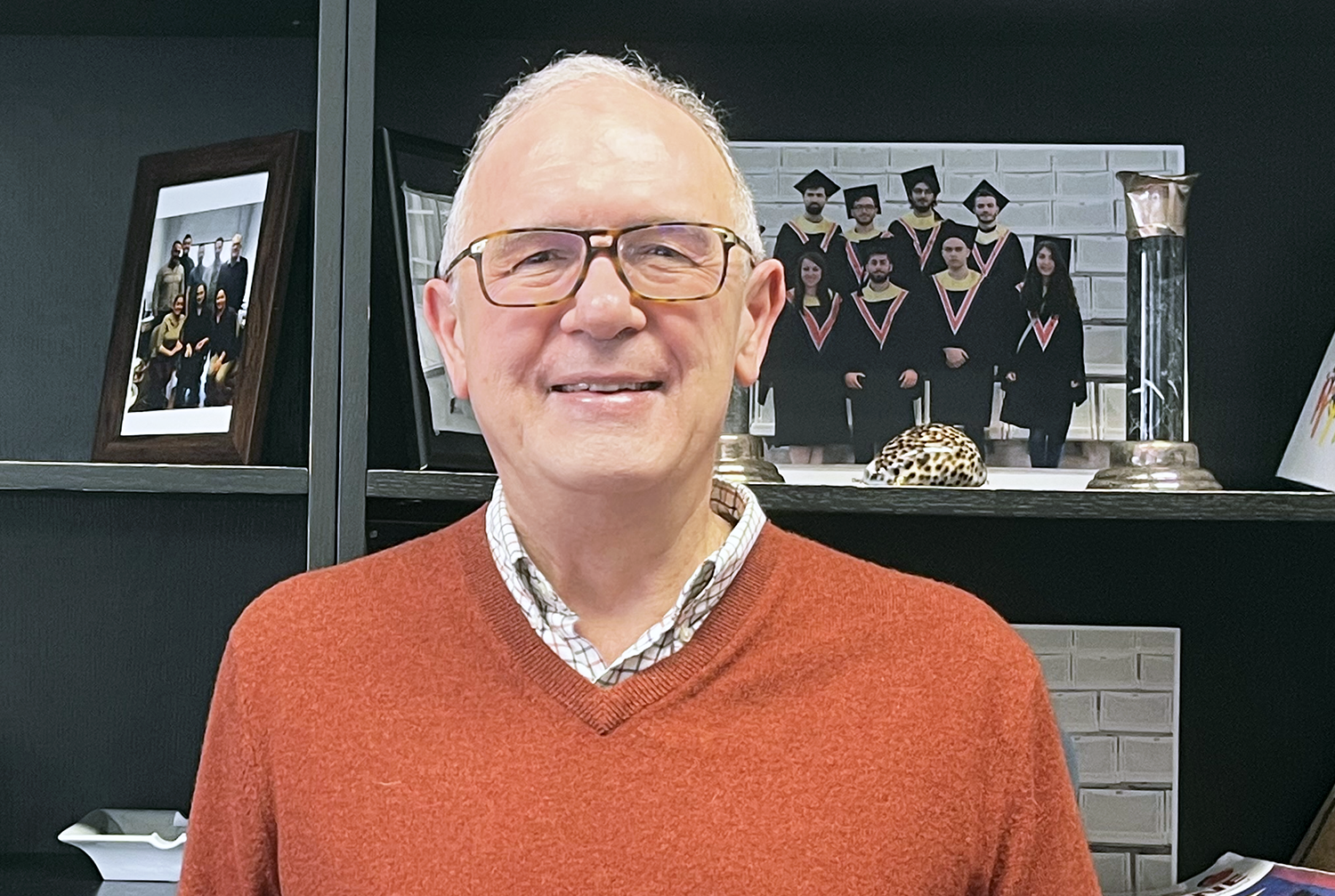Department of Molecular Biology and Genetics member Prof. Dr. Tayfun Özçelik’s discovery was selected by the American Society of Human Genetics (ASHG) as one of the six most significant scientific developments of the last 75 years.
 ASHG, the world’s largest genomics organization, named six scientific breakthroughs in the last 75 years between 1948 and 2023 as milestones in life sciences and medicine. These are:
ASHG, the world’s largest genomics organization, named six scientific breakthroughs in the last 75 years between 1948 and 2023 as milestones in life sciences and medicine. These are:
- The karyotyping techniques developed in the 1950s, which made it possible to analyse chromosomes, and the first demonstration of the molecular basis of single gene diseases;
- Positional cloning that emerged in the 1980s;
- The discovery of copy number variations and the identification of the Charcot-Marie-Tooth disease gene in the 1990s and 2000s;
- Genome-wide association studies (GWAS) starting from 2005;
- Exome sequencing from the 2010s to the present.
Dr. Özçelik made seminal contributions to the discovery of copy number variations and the gene for Charcot-Marie-Tooth disease in the 1990s. He achieved this through interspecies comparative genome mapping with his mentor, Professor Uta Francke, between 1987 and 1993. During the pre-Human Genome Project era, he mapped 40 neuronally expressed genes to human and mouse chromosomes. This number corresponded to approximately 2.5% of the roughly 2,000 known human genes at that time, an achievement unmatched by any other single team. This work included genes involved in synaptic vesicles, axons, and neuronal growth factors, which were mapped through collaborative studies with scientists, including five Nobel laureates. These laureates were: Michael S. Brown and Joseph L. Goldstein, recipients of the 1985 Nobel Prize in Medicine (farnesyltransferases); Thomas C. Südhof, recipient of the 2013 Nobel Prize in Medicine (synapsin, synaptophysin, synaptotagmin, synaptobrevin); Michael W. Young, recipient of the 2017 Nobel Prize in Medicine (cryptochrome 1); and Charles M. Rice, recipient of the 2020 Nobel Prize in Medicine (alpha-interferon signaling pathway and genetic susceptibility to COVID-19).
Genetic mapping is the first step in genomic research. In this way, genome biology and the basis of inherited diseases are understood. PMP22 (peripheral myelin protein 22), which was mapped in this context, is one of the basic proteins of the myelin layer surrounding the axons. For the first time, a human gene was mapped using polymerase chain reaction (PCR) technology in the winter of 1991. Dr. Özçelik accomplished this by working directly in the laboratory with Kary B. Mullis, the inventor of PCR and recipient of the 1993 Nobel Prize in Chemistry. Following this analysis, the PMP22 gene was mapped to chromosome 17 in humans and chromosome 11 in mice. Moreover, it was shown for the first time that a human gene is located within a copy number variation in the genome (“Trembler mouse carries a point mutation in a myelin gene.” Nature. 1992 Mar 19;356(6366):241-4. doi: 10.1038/356241a0).
According to classical Mendelian genetics, there are two copies of each gene in the human genome, one inherited from the mother and the other from the father. The exception to this rule is the X and Y chromosomes. Indeed, the vast majority of approximately 25,000 genes exist in pairs. This forms the basis of inheritance mechanisms described as recessive and dominant. Not only humans but all mammals also carry two copies of each gene in a similar manner. In other words, they are diploid organisms.
The discovery of copy number variation demonstrated that the classical assertion is not always valid; some genes can exist in three or more copies, introducing mechanisms that go beyond Mendelian genetics at a conceptual level. Over the 35 years since the 1990s, it has become evident that copy number variation is not limited to chromosome 17 and the PMP22 gene but extends to many regions across the genome. This mechanism has been recognized as fundamentally significant in genome evolution. The critical role of copy number variations in the birth and death of genes is now acknowledged. Additionally, it is now understood that copy number variations are the underlying cause of many genetic diseases (657 words).
For more comprehensive information, you can visit: https://www.ashg.org/discover-genetics/timeline-3/
Prof. Tayfun Özçelik has been working at Bilkent University for nearly 30 years. After completing high school in Italy and Turkey, he conducted his medical studies at İstanbul, Geneva, London, Oxford and Yale Universities. He was trained in the physiology and medical genetics fields at Munich, Yale and Stanford Universities. With his mentor Prof. Uta Francke, he mapped genes to human and mouse chromosomes and contributed to the early gene maps, which eventually culminated to the Human Genome Project.
He is a past president of the Turkish Society of Medical Genetics, Scientific Programme Committee Member of the American Society of Human Genetics and Board Member and Education Committee Chair of the European Society of Human Genetics. His research is supported by the EU, NIH (National Institutes of Health), WHO (World Health Organization), TWAS (The World Academy of Sciences), HHMI (Howard Hughes Medical Institute) and TÜBİTAK (The Scientific and Technological Council of Türkiye). He is currently conducting research jointly with Rockefeller, Harvard, Cambridge Universities and Mount Sinai Medical Center. He is a principal member of TÜBA (Turkish Academy of Sciences) and recipient of the 2012 TÜBİTAK Science Award. https://mbg.bilkent.edu.tr/tayfun-ozcelik/